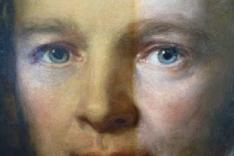Click on the image | Book ‘Mirka Mora, a life making art’ |
Click on the image | The Shekhawati Project. International workshops of conservation of frescoes in Shekhawati region, Northern Rajasthan, India. Advocacy for sustainable conservation and sensible re use of buildings. |
Insights into painting conservation treatments | |
Collaboration with artist Location: Melbourne Year: 2009, 2010 Artwork: Mosaic seat, Saint Kilda Pier | |
Collaboration with artist Location: Melbourne Year: 2009 Artwork: Two mural paintings in public places | |
Thangkas conservation workshop, Taiwan 2009 Location: Tainan University of the Arts, Asian Art Conservation Department, South Taiwan Year: 2009 Duration: one week Aim: Impart knowledge and skills in thangka conservation to students in paper conservation. Partial treatment on several case studies | |
Mustang (Northern Nepal) 2008-2009 Organisation: Himalasia Foundation Location: Upper Mustang, private Buddhist temple still in use Year 2008-2009 Duration: 4 weeks each year Aim: Feasibility study and conservation treatment on mural paintings and architecture conservation; on-site training of local conservation architects and conservators for documentation and conservation treatment | |
Unesco workshop Nepal 2005 Conservation of thangkas Organisation: UNESCO and Himalasia Foundation Location: Shechen monastery, Kathmandu, Nepal Year 2005 Duration: Three weeks Aim: train local people to conserve their own heritage Format: practical conservation sessions (thangkas lent by Chhauni museum, Kathmandu), lectures on materials, interactive sessions about preventive conservation within local museums, theoretical and iconographic lectures given by a Tibetan reincarnated lama. | |
UNESCO workshop Nepal 1999 Location: Sundari Chowk(‘the beautiful courtyard’), Patan palace, Kathmandu valley Year 1999 Duration: 4 weeks Aim: Uncovering and conserving 17th century secular mural paintings newly discovered in the palace; on-site training of two local conservators from the National Laboratory of Archaeology. | |
Workshop National Museum of Bhutan 1997 Location: National Museum of Bhutan, Paro Year 1997 Duration: Three weeks Aim: setting a conservation studio in the museum, training the two museum conservators Format: practical sessions about materials, prevention, toxicity, diagnosis, treatment. Visits from local religious authorities and media | |
| Handbook for preventive conservation in Bhutan (Himalayas). Rolex Award for Enterprise (Associate Laureate) 1996 Why? Rich heritage, harsh climate conditions, access sometimes difficult. Temples in charge of caretakers regularly changed. Format: Collaborative project between painting conservator, architect and national government culture officer Method: Survey of selected sites, identification of conservation issues, recommendations for better conservation, with a holistic approach of a temple Publication: Handbook designed for the monks and caretakers of the temples, to show simple and applicable measures of preservation Use Regularly distributed and used in Nepal and Bhutan Inspired specific handbooks for conservation created for Textile Museum, Bhutan and a village cave temple, Mustang On line resource for ICCROM-Collasia program website A tool for caretakers to be in charge of their own heritage |
PAINTING CONSERVATION










